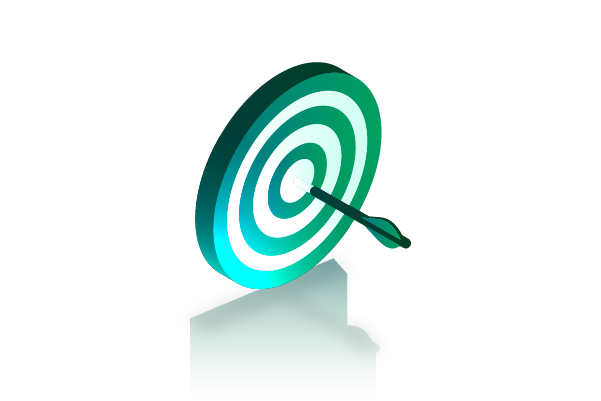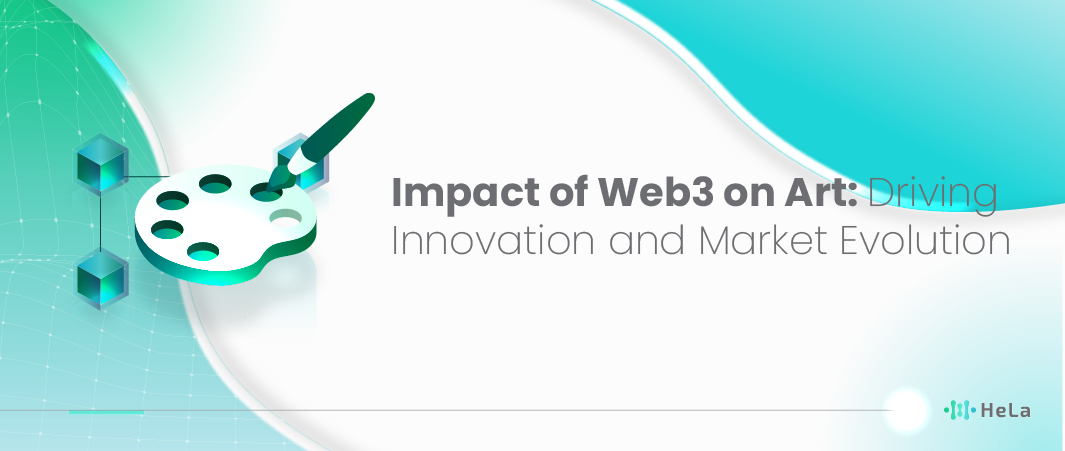How Web3 is Impacting the Arts? This question reflects the growing significance of blockchain technology and decentralization in transforming the art world. Web3 is reshaping how art is created, owned, and experienced by introducing decentralized platforms, NFTs (non-fungible tokens), and smart contracts. Artists can now bypass traditional gatekeepers like galleries and auction houses, selling their work directly to collectors while ensuring transparency and security through blockchain. This shift empowers artists with more control over their creations and offers buyers verifiable ownership, enhancing trust and fairness in the art market. The rise of Web3 is not just a technological evolution—it’s a fundamental change in how the art industry operates.
As Web3 continues to evolve, its impact extends beyond individual transactions to the broader art community. Decentralized Autonomous Organizations (DAOs) are enabling collective decision-making and funding models, allowing communities to directly support and engage with art projects. This creates a more inclusive and participatory art market, where artists and enthusiasts from around the world can collaborate without geographical or financial barriers. The article ahead delves into how Web3 is driving this transformation, highlighting its potential to make the art world more transparent, accessible, and innovative. Read on to explore the groundbreaking ways Web3 is reshaping the future of art.
The Rise of Web3 in the Art Industry

When it comes to art, Web3 is an important evolution that focuses on creating new art, owning the art, and explicitly sharing art through concepts like the blockchain and decentralization. Historically, all the intermediaries such as galleries, auction houses, and artists themselves performed as key drivers of the art market, controlling both the production and distribution of art objects within the framework of particular methodologies of operation. Such decentralization paves the way for the development of a fairer and more open approach to producing and governing art while ensuring artists own the rights to their creations and fair way of dissemination. In this new system artists don’t need to rely on the conventional art leaders within the traditional art world.
One of the significant parts of Web3 within art is Non-Fungible Tokens or NFTs. They enable creators to produce copies of their works in the form of NFTs that can be purchased, sold, or traded in specialist markets based on blockchain solutions. Every NFT is stored on a block chain and comes with an official stamp of the owner’s authenticity, which is a huge advantage in the world of art. This technology not only ensures buyers that they are buying original paintings and other forms of artwork but it also allows artists to make future sales of their artwork in the form of royalty – a feature that is difficult to come across in the traditional art market. The immutability and decentralization of blockchain records provide for the protection and financial incentive never before attainable for artists.
As for the basic concepts of Web3, they include DAOs (Decentralized Autonomous Organizations) in the art industry, which changes the funding and management of art projects. DAOs are business structures that are directed by smart contracts, and through those, communities of art enthusiasts can make decisions regarding their fund allocation to new art projects. For instance, a DAO formed by collectors or patrons that collectively fund art initiatives provides an example of decentralised funding. This empowers the community to decide the trend of the art they appreciate, and breaks away from the control of some entities commonly seen in the financial sector, making art patronage liberal and more community-oriented.
Lastly, Web3 could help to create a more diversified and global art market through geographical decentralization and lowering of transaction costs. Online market via blockchain intermediaries makes it possible for artists from different parts of the globe to display their work and transact directly with buyers. This model grants independence artists the ability to reach recognition and income in one way or another, directly from the global audience, irrespective of their geographical location and financial status. Web3 is emerging in art business as a shift towards openness, diversification and dematerialization, which indeed changes the role and perception of art in the age of digital and decentralized creativity.
How Web3 is Impacting Arts?

Web3 has a significant impact on the art industry that is mainly associated with blockchain and decentralization. Through Web3, artists have found new ways of reaching out to their clients, departing from the usual artistic models that require a middleman such as galleries or auction houses. Using blockchain, artists are now capable of creating and selling new, unique digital artworks or re-selling the already existing ones as NFTs that can identify the owner’s rights securely. It has given the artists a platform where they can get an audience across the globe on their own terms, thus taking control of not only the art but also its dissemination.
Also Read: 15 Best Web3 Social Networks to Consider (Update 2024)
Perhaps the most profound demonstration of how Web3 disrupts typical art value and ownership is through the use of NFTs. Historically, the ownership rights of the tangible art pieces were usually challenging to establish and control. Web3 eliminates this problem by issuing certificates of authenticity and ownership on the blockchain for digital art and ensuring that artists are paid for second-hand sales. Use of blockchain technology enabled the tracking of authorship as well as the ownership and this aspect was missing in the art domain.
The art sector has also being opened up through Web3 due to this, more so the beginners in the arts market. Before, obtaining accreditation and entry to larger and better quality markets, demanded large amounts of money or being part of the art community. Today, with Web3 platforms, artists can present their creations or artworks and sell them to collectors without the intermediation of galleries or any large promotion expenses. This expanded availability can also lead to more creative variation and perspective to be included into the art, thus making the art more inclusive and diverse.
Further, Web3 has brought the concept of funding and cooperation through DAOs (Decentralized Autonomous Organizations). This way, fans and investors can rally together and decide through a decentralized manner which projects to fund. Thus, it not only opens new financing avenues for artists but also helps mobilize the community at large in the creative process. DAO decision making empowers fans and stakeholders and moves the art market into the new era catalyzed by Web3.
The Impact of Web3 in Art Industry

Web3 is not simply changing the arts, but indeed redefining how artworks are produced, perceived and appraised. In its essence, Web3 relies on blockchain and presents new opportunities for artists. With NFTs (non-fungible tokens or tokenized art), artists are able to generate new forms of well authenticated digital artwork that can also be sold on the market. This not only opens the doors to a new form of ownership in the digital space but also creates a new avenue for artists to sell their work directly without relying on middlemen such as galleries and auction houses. As such, artists are freer to implement their visions and can sell artwork to art lovers from around the world, changing the conventional art world model.
Another major change that Web3 brings is the shift in art ownership and authorship. In the past, it was a challenge to prove the authenticity of physical artwork and ownership due to the many controversies associated with it. Web3 addresses this by preserving an unalterable record of every transaction and ownership change implemented on the blockchain. This makes the buying process seamless because any buyer of art can be assured that the art piece came from where it claims to have originated from. Moreover, this technology helps artists make money from successive sales of their artwork, making the kind of consistent revenue that was hard to come by in the traditional art market.
Web3 also plays a role in undermining the hegemonic dominance of the art world by providing opportunities for young and independent artists. In the past, obtaining an opportunity to be recognized in the art world needed a lot of capital or influential contacts. The use of Web3 technologies allows artists to immediately create their pieces and sell them to collectors without having to search for the gallery or advertise their works. This makes it possible for so many types of art and various points of view to be presented and accepted by the society, which offers new opportunities for growth to artists who were previously overlooked.
Moreover, Web3 brings new forms of cooperative and financing by using DAOs – Decentralized Autonomous Organizations. As decentralized autonomous organizations, DAOs enable art communities to collectively decide on funding and supporting projects to foster increased participation and democracy in the art world. It makes it possible for aficionados to combine their money and decide which projects to fund, thus, strengthening the bond between artists and the audience. Such a system not only creates new ways for artists to receive financing, but also integrates the audience more effectively, demonstrating how Web3 is revolutionizing art.
Web3’s Potential in the Art Industry
Web3 has the possibility to revolutionize the art business and become one of the main directions in the enhancing of decentralized technologies within art creation, possession, and even experience. Web3’s potential of revolutionizing art markets is one of the most attractive aspects of Web3. Originally, art appreciation and a chance to exhibit relied on individual invitations and representation by specific galleries. In Web3, artists can create and sell their works as NFTs through decentralized marketplaces without involving art dealers. Direct access also benefits the artistic community by eliminating many hurdles for upcoming artists and provides them with a worldwide audience, thus increasing their market and exposure.
Another major area of opportunity of Web3 is to improve the degree of transparency and the origination of art pieces. The use of blockchain technology provides a means of developing a record with a high degree of certainty and control where the ownership and origins are difficult or impossible to alter. This implies that buyers can be assured of the genuineness of digital art and the history of the piece on the Blockchain. For artists, there is extra benefit in terms of entire ownership and royalties for the work besides the possibility to be involved in secondary markets. A number of problems appeared associated with forgery and provenance that have been relevant to the art market for a long time, and this system contributes to creating a more reliable market environment for transactions.
Also Read: Web3 and AI are the Next Digital Revolution
Web3 also brings unique features of interacting for artists and collectors through more interactive and immersive experiences. Using smart contract and decentralized platforms, artists can create temporal art pieces or art pieces that can actively engage with art consumers. These features suggest that interactive and innovative creative possibilities in compared with the static creative artworks. For collectors, it presents the opportunities to interact with works of art in deeper and more active ways, which is likely to improve the relationship between them and the artist.
In addition, with the increased popularity of DAOs (decentralized autonomous organizations) within the Web3 environment, new opportunities for funding and engaging in Art have emerged. With DAOs, art lovers, and investors can contribute towards a common pool and decide jointly on which projects to fund. Besides decentralizing the funding process, it also encourages the involvement of all the members in the projects focused on art. This model offers great advantages for artists, they gain new financial opportunities and more involved viewers; collectors and supporters are invested in a work’s success if they backed it. This approach illustrates a move toward decentralization that elevates communal, collective contributions as enabled by Web3 technological advancements.
Conclusion
How Web3 is Impacting the Arts? The answer lies in the transformative role of blockchain technology in reshaping the art world. Web3 has empowered artists by decentralizing the creation and distribution of art, allowing for direct interaction between creators and collectors through NFTs and blockchain-based platforms. This shift has introduced greater transparency, security, and fairness into the art market, giving artists more control over their work and ensuring that buyers can verify ownership and authenticity. Moreover, the rise of DAOs has fostered a more collaborative and community-driven approach to art funding, allowing for new and innovative ways to support artistic projects.
As Web3 continues to evolve, its impact on the art industry is expected to grow, driving further innovation and inclusivity. By lowering barriers for emerging artists and breaking down geographical limitations, Web3 is creating a more accessible global art market. This decentralized approach is not just a technological trend but a fundamental change in how the art world operates, offering new opportunities for artists and collectors alike. The future of art in the Web3 era promises to be more dynamic, participatory, and open, as blockchain technology continues to redefine the possibilities of creation, ownership, and engagement in the arts.
Disclaimer: The information provided by HeLa Labs in this article is intended for general informational purposes and does not reflect the company’s opinion. It is not intended as investment advice or a recommendation. Readers are strongly advised to conduct their own thorough research and consult with a qualified financial advisor before making any financial decisions.

